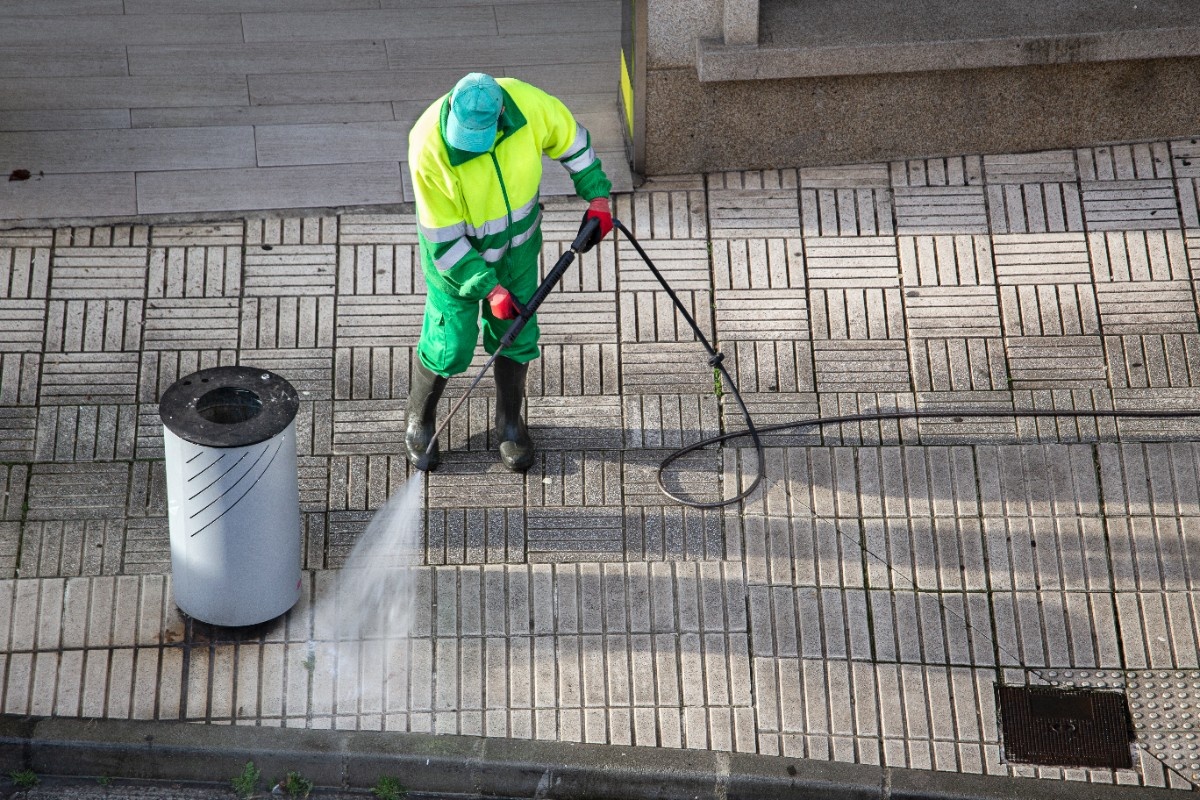Lot Stain Removal That Won’t Cause Damage
Parking lots and paved surfaces are workhorses for commercial properties. They handle constant traffic, unpredictable weather, and everything from oil leaks to spilled coffee—day in and day out. Over time, these surfaces begin to show signs of that wear: dark stains, streaks, rust marks, and discoloration that affect not only how the property looks, but also how it’s perceived.
While stain removal may seem straightforward, the wrong method or chemical can easily cause more harm than good—leading to permanent damage, costly repairs, or surface degradation. That’s why knowing how to tackle common stains safely and effectively is critical for any property or facility manager responsible for maintaining commercial lots.
Common Lot Stains and What Causes Them
Different stains come from different sources, and each one requires a tailored approach to remove without damaging the surface underneath.
- Oil and Grease – Leaking fluids from parked vehicles—engine oil, brake fluid, coolant—soak into porous asphalt or concrete, leaving slippery, dark patches that spread when it rains.
- Rust – Often caused by irrigation systems using iron-rich water, abandoned metal objects, or runoff from fertilizer. Rust chemically bonds with minerals in concrete, making it harder to clean.
- Tire Marks – Rubber streaks from repeated turns and stops—especially in high-traffic areas—leave behind black marks that cling to asphalt and concrete.
- Paint and Graffiti – Overspray from nearby painting or tagging incidents can be deeply embedded, especially on unsealed surfaces.
- Organic Stains – Leaves, algae, tree sap, bird droppings, and other natural debris can cause staining that worsens with moisture and time.
Removing Oil and Grease Without Surface Damage
Fresh oil spills are easiest to handle. Acting fast can prevent the fluid from soaking deep into the surface.
Here’s how to manage oil and grease safely:
- Absorbent Materials: For new spills, cover with cat litter, sawdust, or baking soda. Let it sit to absorb oil before sweeping up.
- Biodegradable Degreasers: Apply a non-corrosive cleaner directly to the stain. Let it soak for 10–15 minutes, then scrub with a stiff-bristle brush.
- Poultice Method: Mix baking soda and water into a paste. Apply it thickly over the stain, cover with plastic wrap, and let it sit overnight before rinsing.
- Pressure Washing: Use a pressure washer at 1500–2000 psi with a fan-tip nozzle. Too much pressure or the wrong angle can cause etching or surface wear.
Avoid harsh solvents like gasoline or kerosene—they can damage both asphalt binders and concrete finish.
Removing Rust Without Etching Concrete
Rust stains are more than just cosmetic. If left untreated, they can weaken the surface and attract further deterioration.
Safer options include:
- Phosphoric Acid Cleaner: Milder than muriatic acid but still effective. Apply with a soft brush, let sit for 5–10 minutes, rinse thoroughly.
- Natural Acids: For small areas, lemon juice or vinegar can break up rust. Let it soak, scrub gently, and rinse.
- Oxalic Acid Paste: Mix with water and apply to the stain. Cover with plastic and allow it to sit for 1–2 hours, then rinse thoroughly.
Always rinse and neutralize with clean water after treatment to prevent long-term surface damage.
Removing Tire Marks Without Scuffing
Rubber deposits from tires bond with the surface, especially in heat. Removing them requires friction and the right cleaner—without damaging the lot.

Steps include:
- Apply Degreaser or Rubber Remover: Let it dwell on the surface for 10–15 minutes.
- Scrub with Nylon Brush: Avoid wire brushes, which can gouge concrete or scrape asphalt coating.
- Moderate Pressure Washing: Use controlled pressure and movement to avoid surface striping or uneven texture.
Some tire marks may require more than one pass depending on traffic volume and how long the stains have set in.
Addressing Paint and Graffiti Safely
Paint and graffiti can sink deep into unsealed concrete and asphalt. The goal is to lift the material without chipping or pitting the surface.
Use this method:
- Choose a Targeted Solvent: Use mineral spirits for latex-based paint and stronger removers like acetone for oil-based or graffiti paint.
- Apply Poultice Paste: Combine solvent with an absorbent (like clay or baking soda), cover with plastic, and allow it to sit for 12–24 hours. Then rinse and scrub.
- Controlled Pressure Washing: Limit pressure to 1500–2000 psi and maintain a low angle to prevent surface damage.
Be mindful of runoff—paint and solvents require proper containment and disposal to meet environmental standards.
Treating Organic Stains Without Harsh Chemicals
Organic matter may not look threatening, but it can cause deep-set stains, especially in shaded or high-moisture areas.
Safe options include:
- Oxygenated Bleach Solution: Mix oxygen bleach and water, apply generously, and let sit 15–20 minutes before scrubbing.
- Baking Soda Paste: Works well for sticky substances like sap. Let it sit an hour before rinsing.
- Gentle Pressure Washing: Use a wide-angle nozzle and moderate pressure to protect surface texture.
Avoid using chlorine bleach or acidic cleaners, which can leave permanent whitening or streaks on dark pavement.
Preventing Stains Before They Start
The best way to reduce future cleaning needs is to limit how and where stains form in the first place.
Here are some proven strategies:
- Surface Sealing: Applying a concrete or asphalt sealer creates a protective layer. Reseal every 2–3 years to maintain effectiveness.
- Routine Sweeping: Remove leaves, trash, and debris weekly—especially in autumn or after storms.
- Drip Mats and Catch Pads: Use in high-traffic parking spots or loading zones to absorb fluid leaks from vehicles or equipment.
- Rapid Spill Response: Keep absorbent materials easily accessible and train staff to address oil or chemical spills immediately.
A small investment in prevention reduces major costs in resurfacing or deep cleaning down the line.
Mistakes to Avoid
Even with the right intention, incorrect stain removal can lead to permanent damage.
Common pitfalls include:
- Overusing Pressure: High-pressure settings can gouge concrete or strip asphalt coating.
- Improper Chemical Use: Acids may remove stains but also weaken the surface.
- Skipping Test Areas: Always test new products in an inconspicuous area before full application.
- Ignoring Safety Precautions: Many cleaners release fumes or require gloves, eye protection, and proper ventilation.
Following a methodical, surface-safe approach prevents turning a stain cleanup into a resurfacing project.
Facilities teams often don’t have time for trial and error when it comes to stain removal. That’s why many commercial properties rely on partners like National Facility Contractors, who not only understand the chemistry of safe cleaning—but know how to balance speed, surface protection, and long-term durability across multi-site operations.
Conclusion
Stains on commercial lots are inevitable—but damage from removing them doesn’t have to be. Whether you’re dealing with oil leaks, rust, rubber marks, or graffiti, knowing the right approach makes all the difference.
Effective stain removal means understanding what you’re cleaning, choosing the right product, and applying it with care. And it’s not just about appearance—clean, well-maintained lots reduce safety risks, support brand perception, and extend the lifespan of the pavement itself.
With a proactive maintenance plan—and the right support—your lot can stay clean, professional, and problem-free year-round.







